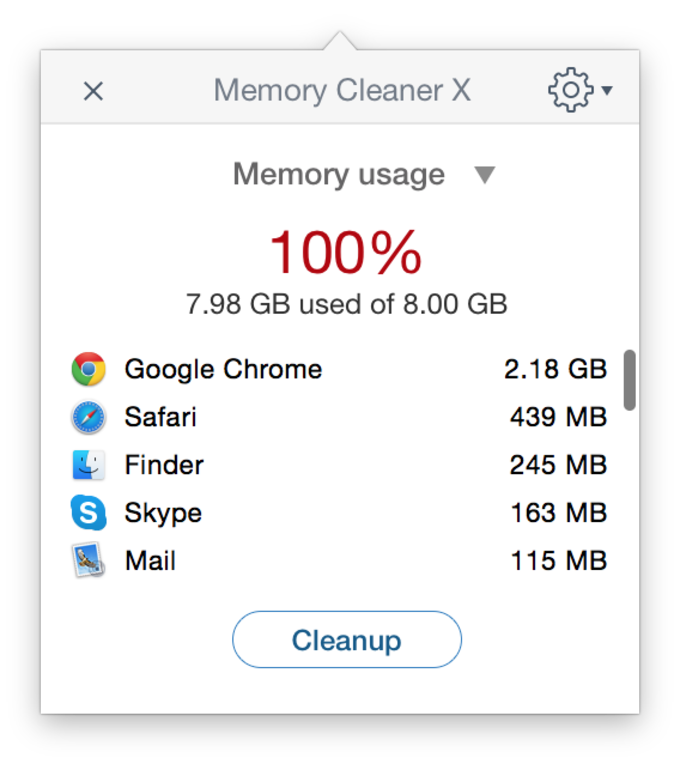

- #Computer memory clean up how to
- #Computer memory clean up drivers
- #Computer memory clean up software
- #Computer memory clean up Pc

#Computer memory clean up how to
We hope this article about How to Automatically Clear RAM cache Memory in Windows 10 has solved all your queries regarding the topic and given some deep and elaborative insights into the impacts of Memory and cache management on your computer or laptop’s performance.The Windows operating system has many caches that are stored on your secondary storage. Make sure you don’t use damaged or defective hardware components like RAM, Hard Disk, etc., for longer periods of time because it also affects other components making the computer even slower with compromising the performance.
#Computer memory clean up drivers
Ensure every driver related to storage and memory are up to date and not corrupted because outdated or defective drivers sometimes cause memory leaks and degrade your computer’s performance.Ĥ. Adjust your graphics settings for best performance with better cache and memory management by eliminating useless visual effects.ģ. For better RAM cache memory clearing and management, consider increasing the amount of RAM on your laptop or computer.Ģ. Other considerable things to boost the Memory of your PCġ. You can also flush the DNS and other cache files using the command prompt in windows 10. These memory allocations become orphan threads or lost memory junks over time and affect the system performance by slowing it down.įollow this shortcut %windir%\system32\rundll32.exe advapi32.dll, ProcessIdleTasks to clear the old lost memory and flush the memory cache.
#Computer memory clean up software
Some software or programs, while closing, don’t release all the system memory allocated to them at starting. Clear memory cache windows 10 cmd / Flush Memory Cache There are many other defrag softwares that will help you to remove unwanted files from your hard disk.
#Computer memory clean up Pc
On the next reboot of your PC or computer, the page file will be removed by the system at the shutdown itself. Change the Value data from 0 to 1 and click the OK button. Find the option called ClearPageFileAtShutdown from the right-pane and double-click on it.Ĥ. Under the Registry Editor window, head over to the path: HKEY_LOCAL_MACHINE\SYSTEM\CurrentControlSet\Control\Session Manager\Memory Management.ģ. Open the inbuilt Windows Registry Editor of your Windows 10 computer either from the Start menu or by typing in the keyword called Regedit in the Run Dialogue Box and pressing the enter key.Ģ. To enable the auto cleaning of the page file at shutdown, you need to change the registry key of the ClearPageFileAtShutdown from 0 to 1 by utilizing the Windows Registry Editor.ġ. Clearing the page file just like the RAM will make your computer’s storage efficient and clean for the next startup. The operating system utilizes the page file(an allocated space on the physical hard disk drive) as an extra RAM when the physical RAM installed on your PC is full. However, it doesn’t remove the page file stored on your computer’s hard disk drive.

The windows operating system clears the system RAM at every shutdown of your computer. If you find some suspicious applications or programs using too much of your RAM amount, consider uninstalling them by utilizing the app wizard or using the Windows Control Panel -> Programs and Features. Sort all the processes running by their usage in Memory percentage and find the programs or processes at the top of the list that you don’t recognize.Ĥ. Select the tab called Processes from the opened Task Manager window.ģ. Open your Windows system’s Task Manager by either pressing Ctrl+Shift+Esc keys simultaneously or by right-clicking on the taskbar at the bottom of the windows screen.Ģ. The easiest and quickest method to clean up the RAM or memory being used is to ensure no system processes or unwanted programs are eating up all the system resources.ġ. These unwanted programs or software could be some of the residue processes of previously uninstalled software or some software which you forgot you installed at some point in time. Find the processes or applications that are unknown to you, or you don’t need them, and disable all such applications that run at your computer’s startup.Įven if some small programs were eating up your PC’s memory, disabling many of them from running at the startup can save a significant amount of memory on your computer. Sort the list of processes from the Startup impact column.ģ.


 0 kommentar(er)
0 kommentar(er)
